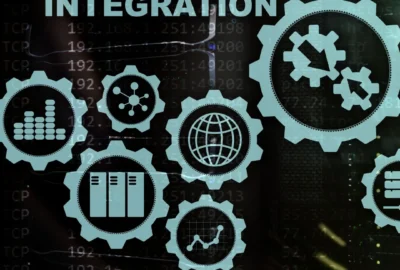If you’re leading a service team in a fast-paced financial or customer-facing business, you already know the struggle of juggling endless tasks while trying to keep customer information accurate, up to date, and easy to access. The reality is: logging customer data shouldn’t be this hard.
But it is.
Each day, team members spend valuable time tracking down old emails, searching for lost customer notes, or updating the same information across multiple systems. And when just one step is missed or delayed, it can affect the entire customer experience—from delayed responses to inconsistent follow-up.
What’s worse? These small errors often pile up and turn into major inefficiencies, frustrated staff, and unhappy customers. The good news? It doesn’t have to stay this way.
This guide offers 10 practical ways service teams can log customer data more efficiently—without overhauling your systems or hiring consultants. These approaches are built for real people working in high-pressure environments, where simplicity, clarity, and speed matter most.
Let’s dive in.
Reduce your Manual and Repetitive Work.
1. Leverage CRM Systems for Centralized Customer Data Management
One of the easiest wins is simply making sure your team uses a CRM system that serves as a centralized database. A good CRM helps you log customer data from sales calls, support tickets, follow-up emails, and even social media interactions—all in one place.
Benefits of centralized data:
- Reduces duplicate work across teams
- Keeps profiles accurate and current
- Speeds up issue resolution and reporting
Example Table: Benefits of Centralized CRM Usage
| Benefit | Description |
|---|---|
| Faster lookup | All customer interactions in one place |
| Improved accuracy | Fewer data entry mistakes |
| Easier updates | One system to update instead of many |
Companies that have adopted unified customer profiles often see a measurable boost in team efficiency—and happier customers.
2. Automate Routine Tasks to Save Time and Reduce Errors
Not all customer interactions require a personal touch. Things like follow-up reminders, thank-you emails, or internal task assignments can be handled automatically—without adding complexity.
Most CRM systems offer simple ways to trigger these actions based on activity. When you log customer data, this automation keeps things moving.
Key benefits:
- Less manual input
- Fewer dropped balls
- More time for high-impact work
Table: Common Tasks You Can Automate in Your CRM
| Task Type | Automation Example |
| Follow-up | Send email 24 hours after support ticket is closed |
| Status updates | Auto-assign case owner when request is marked urgent |
| Notifications | Alert manager if request is untouched for 48 hours |
3. Structure Customer Interaction Records for Easy Search and Analysis
If your service team logs notes in freeform ways, you’re not alone—but it makes pulling reports or solving problems later much harder.
By structuring how you log customer data, you make it easier to find the information you need—fast.
Best practices:
- Use consistent tags and categories (e.g., “billing issue” vs “technical issue”)
- Always link notes to a customer profile
- Include date/time stamps for all entries
This simple structure helps unlock trends and spot issues early.
4. Integrate CRM with Productivity Tools to Streamline Workflows
Every second spent switching tabs is a second lost.
By connecting your CRM with the tools your team already uses—email, calendar, chat—you can dramatically cut down on wasted effort. When you log customer data, these tools can pull info automatically or send updates to relevant people.
Practical ideas:
- Log meetings directly from your calendar to the CRM
- Pull email threads into the customer timeline
- Push CRM tasks into your team’s to-do list app
Table: Common Integrations That Boost Efficiency
| Tool | Integration Benefit |
| Link conversations to profiles | |
| Calendar | Attach meetings to customer history |
| Task Manager | Auto-assign action items from CRM |
5. Utilize AI Capabilities in CRM for Smarter Data Management
Some CRMs now offer built-in features that help predict what a customer needs or flag which cases to prioritize.
These tools don’t require technical know-how. They simply help your team log customer data more intentionally and act on it faster.
Benefits:
- Prioritize high-risk or high-value accounts
- Surface trends you might miss manually
- Reduce time spent reviewing repetitive cases
Reduce your Manual and Repetitive Work.
6. Embrace Cloud-Based CRMs for Flexibility and Scalability
For many teams, the shift to remote or hybrid work has made traditional systems difficult to manage. That’s where cloud-based CRM systems shine.
They let you log customer data from anywhere, at any time—without worrying about syncing or storage limits.
Key advantages:
- Real-time access from any device
- Lower upfront costs
- Easier scaling as your team grows
Table: Comparing On-Prem vs Cloud-Based CRM
| Feature | On-Prem CRM | Cloud CRM |
| Access | Local only | Remote and mobile-friendly |
| Setup cost | High | Low or subscription-based |
| Maintenance | Manual updates | Automatic updates |
7. Enhance Team Communication Through Real-Time Data Updates in CRM Systems
When teams can’t see what others are doing, things fall through the cracks.
Real-time updates in your CRM ensure everyone is working from the same information. When you log customer data, it immediately reflects across all profiles and team dashboards.
Outcome:
- Better handoffs between departments
- Fewer repeated questions
- Clearer responsibilities
8. Ensure Data Security While Maintaining Accessibility with Secure Access Controls in CRM Systems
While speed matters, so does data security. It’s not about locking everything down—it’s about smart access.
By applying simple user permissions and audit trails, your team can log customer data safely, without risking sensitive details.
Tips:
- Role-based access: Let people see only what they need
- Two-factor authentication: Adds simple protection
- Activity logs: Track changes without micromanaging
9. Measure Efficiency Gains from Improved Customer Data Logging Practices
Want to prove that better systems work? Track how your team’s performance changes once you log customer data more efficiently.
Key metrics to monitor:
- Response and resolution times
- First-contact resolution rate
- Number of duplicate entries
- Customer satisfaction scores
Table: Sample KPIs to Track Customer Data Logging Improvements
| KPI | Why It Matters |
| Avg. response time | Shows team speed after streamlining data entry |
| Error rate | Tracks reduction in duplicate or inaccurate entries |
| CSAT | Reflects customer experience improvements |
By reviewing these numbers regularly, you can keep improving without overcomplicating things.
Conclusion
At the end of the day, logging customer data shouldn’t feel like a chore—it should feel like progress. Every note, tag, or task added should bring your team one step closer to resolving issues faster and delivering a smoother experience.
The 10 ways outlined in this article aren’t just about tools—they’re about working smarter, not harder. For service teams stretched thin and under pressure to perform, these strategies offer a more human, more effective way to manage the madness.
When you simplify how your team logs customer data, you free them up to do what they do best: serve customers.
The faster, smarter way is possible. And it starts with one small improvement at a time.
Featured image: Generated from Canva



